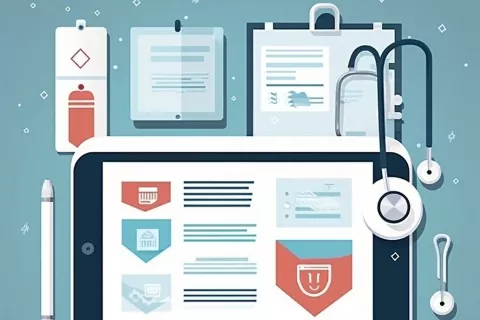
An installation guide is a type of technical document that the device manufacturer provides during medical equipment installation. It contains instructions on how to install software, hardware, or any other components that need to be assembled. An installation guide for a blood pressure monitoring device, for instance, can show users how to assemble the parts, whereas an installation guide for a pacemaker device can show users how to set it up.
Any company that manufactures consumer products with multiple components is likely to provide consumers with quick guides. The guides are designed to assist users in successfully installing and configuring products by providing clear, concise, and easy-to-follow instructions.
The Contents of an Installation Guide The topics covered in an installation guide include the following:
- Introduction: This section provides an overview and purpose of the product along with the purpose of the installation guide. Thus, the Introduction should explain the functions and importance of the product. It may also include information about the target audience of the installation guide, as well as any prerequisites or dependencies that must be in place before beginning the installation process.
- Pre-installation Requirements: This section assists users in preparing for the installation process by outlining the steps required to ensure a successful installation. It lists the prerequisites and dependencies necessary to install the device. This includes specific hardware (CPU type, RAM, hard drive type [e.g., SSD], file system/partition, and the required disc space). It should specify the required software as well as the required (minimum) version and release. The following elements could be included:
- Operating System: Specific Linux distributions (Red Hat Enterprise Linux, Debian, Ubuntu) or Windows operating systems (Windows Server, Windows 11, etc.).
- Application Server: As per the software requirements, enter the vendor details and the name and version of the application server (if not already automatically installed by the software’s installer).
- Libraries and Additional Software: If any specific software or library is required, it needs to be specified (e.g., .NET framework, JAVA SDK, etc.).
- Pre-installation Checklist: This section assists the user/administrator doing the installation and helps ensure that they do not miss any item or task.
- Installation/Assembly and Configuration Procedure: This section includes a set of detailed, precise, and accurate instructions. If you are using a package manager, make sure to use the correct installation commands and parameters. If there are several installation methods available, you should cover all of them (e.g., a simple or an advanced mode). The installation procedure should also include detailed instructions. You can update the configuration file and settings once the installation is complete. List all the necessary configuration files or screens, configuration elements, and possible values, as the default configuration and values may not be suitable for every customer. Readers must understand what is to be checked and what the expected results and outcomes are.
- Post-installation Checks: After you have successfully completed the installation and configuration, you may be required to do some clean-up tasks. This could include things like deleting the installation files, cleaning up the temp folder, or setting up a database backup. When the installation is complete, the administrator should validate it. If the application includes a “self-check,” explain how to use it as well as how to evaluate the results. Otherwise, describe the main items to be checked (for example, whether a user can login, the database is updated, log files are created with specific values, etc.).
- Troubleshooting: In technical writing, the goal of troubleshooting is to provide users with the information that they need to quickly identify and resolve issues with a product/system. Details on how to Identify, diagnose, and resolve issues that users may encounter while using a product or system should be listed. In turn, the steps listed can help users resolve issues they may encounter while using a product/system.
- Installation Plan Validation Checklist: You can use this tool to ensure that a system/equipment installation plan is thorough, accurate, and meets all the relevant regulations and standards. The checklist ensures that all aspects of the installation plan have been considered and that any potential issues have been identified and addressed before beginning the installation. By establishing an installation plan validation checklist, the user/administrator performing the validation can ensure that the device works properly without problems.
- Uninstallation/Disassembly: Uninstallation or disassembly instructions are typically included in installation guides for situations in which you must remove the installed product/system for maintenance, repair, or replacement. This helps users avoid product/system damage and allows for simple reinstallation or replacement, if necessary.
Conclusion
The user interacts with the product for the first time during the installation process. A good installation guide prevents problems, and a smooth installation process ensures that the customer is confident enough to continue using the device and that all hardware/software components are well coordinated.
Are you installing any software or hardware for your medical device? Do you require assistance on the installation guide? Reach out to us. Stay informed! Stay compliant!









